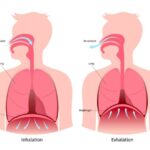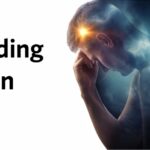What is Vestibular Rehabilitation Therapy?
The vestibular system can be divided into two main systems:
-The peripheral vestibular system which is made up of the ear structures and the nerve pathways to the brain.
-The central vestibular system is made up of the brainstem and brain.
Conditions affecting either the central or peripheral vestibular systems can cause vertigo, dizziness, gaze stability issues, as well as imbalance.
For more information on the function of the vestibular system, see the blog Dizziness and the Vestibular System.
Vestibular Rehabilitation Therapy or VRT is an evidence supported specialized form of physical therapy intended to alleviate the direct and indirect consequences of conditions affecting the vestibular system. There are some conditions which can be resolved with treatment, for example, benign paroxysmal positional vertigo (BPPV.) However, a person may suffer from permanent damage to the vestibular system in other conditions.
Specific treatment techniques and exercises can reduce symptoms of this damage. This is done by teaching other body systems to compensate and circumvent the damage. Our brains learn to use other senses to substitute for the missing information. When using appropriately progressed exercises, the body compensates and quality of life improves.

There are 3 main treatment strategies that VRT uses:
- Habituation exercises are used to expose multiple sensory systems to specific activity to allow said systems to be used in a different way. You can think about this as habituating or learning something new. Repetition is key for new pathways or learning to occur. People who need technique typically report dizziness related to self motion, like head movements, or dizziness from visual stimulation like busy environments or watching TV.
- Gaze stabilization exercises are used to improve control of the eye movements as it relates to head movement. This taps into what is called the vestibular ocular reflex, which involves the peripheral vestibular apparatus, the central processing mechanism, and control of the eyes. People who need this exercise typically report seeing objects that are doubled or move around when trying to read or when they are walking.
- Balance training exercises are used to improve steadiness and promote independence with daily activities reducing risk of falls. The vestibular system is just one of several systems that work together to keep us balanced and upright. Balance training is similar to habituation exercises in that repetition allows several systems to work together more fluidly. Improving and maintaining balance is extremely important to address for people who have a history of falls or are more susceptible to falling.

There is also specialized treatment for Benign Paroxysmal Positional Vertigo. This involves very specific movements of the head and body. I will go into much more depth in a future blog on BPPV.
It is key to have appropriate expectations for VRT as this is a process that takes time and diligence as you guide changes in your peripheral and central vestibular systems. Some factors that may impact your recovery include lifestyle, pain, other medical conditions, certain medications, and emotional/mental health concerns.
VRT is a proven successful way to return people to improved quality of life with less dizziness and imbalance. If you are experiencing dizziness please read the Dizziness and the Vestibular System Blog and seek medical consultation with your Primary Care Provider to rule out other conditions that may be causing your symptoms. If you would like to have a thorough evaluation and or have been diagnosed with vertigo or a vestibular condition and are looking to improve the quality of your life please give us a call. You have existing potential to improve your quality of life.
References:
- Somisetty S, M Das J. Neuroanatomy, Vestibulo-ocular Reflex. [Updated 2021 Jul 31]. In: StatPearls [Internet]. Treasure Island (FL): StatPearls Publishing; 2022 Jan-. Available from: https://www.ncbi.nlm.nih.gov/books/NBK545297/
- Goldberg JM, Cullen KE. Vestibular control of the head: possible functions of the vestibulocollic reflex. Exp Brain Res. 2011;210(3-4):331-345. doi:10.1007/s00221-011-2611-5
- Naranjo EN, Cleworth TW, Allum JH, Inglis JT, Lea J, Westerberg BD, Carpenter MG. Vestibulo-spinal and vestibulo-ocular reflexes are modulated when standing with increased postural threat. J Neurophysiol. 2016 Feb 1;115(2):833-42. doi: 10.1152/jn.00626.2015. Epub 2015 Dec 2. PMID: 26631147.
- Fox, DPT, K., 2014. The Peripheral Vestibular System. [free article] Available at: <https://vestibular.org/wp-content/uploads/2020/05/Peripheral-Vestibular-System_48.pdf> [Accessed 14 February 2022].






